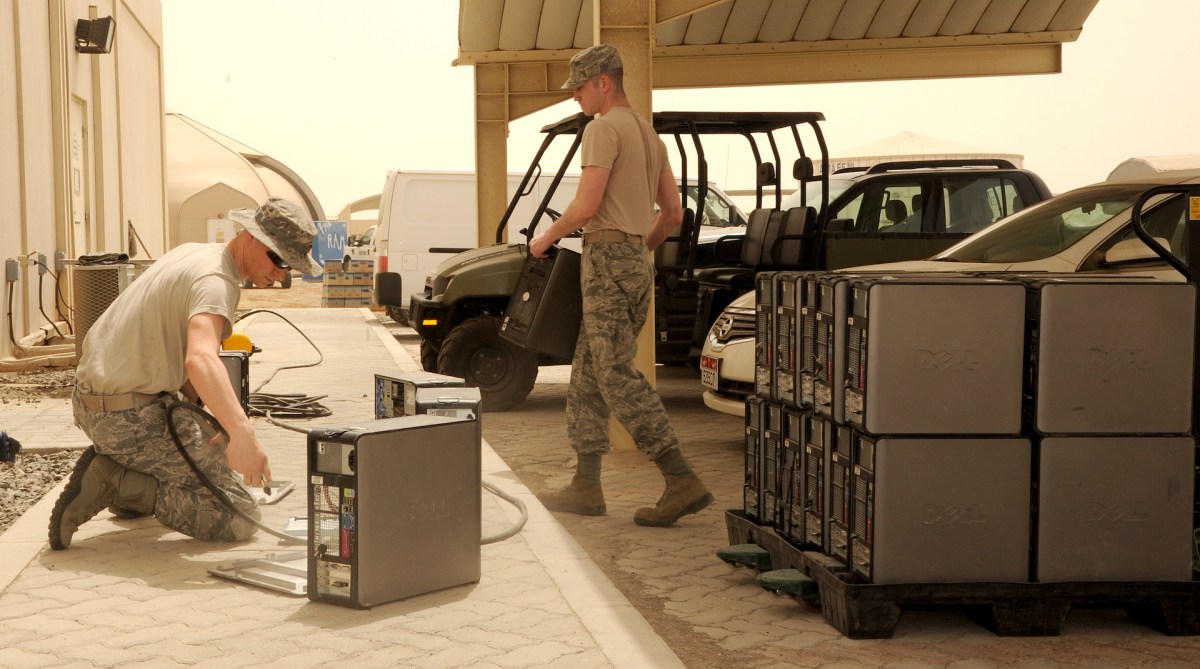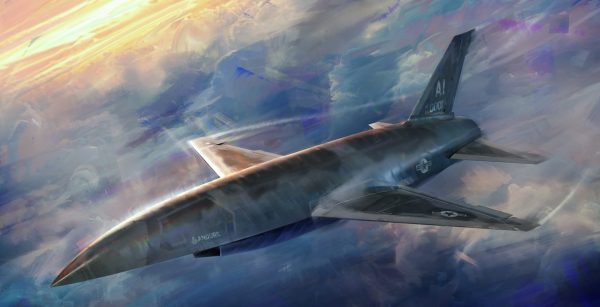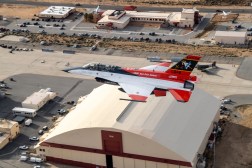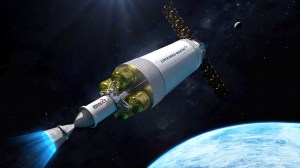Air Force grappling with budgetary implications of enterprise IT as a service

The Air Force is looking to avoid a one-size-fits-all approach to rolling out enterprise IT as a service — widely referred to as EITaaS — as it weighs budgetary and infrastructure considerations, according to its acquisition chief.
An aim of the multibillion-dollar EITaaS program is to outsource basic information-technology work to free up airmen for more specialized, cyber-focused network defense and mission assurance efforts. The organization plans to deploy new capabilities in “waves.”
“There’s multiple elements to the EITaaS enterprise … because these things are large and complex, right. It’s essentially about modernizing IT across the Department of the Air Force,” Assistant Secretary for Acquisition, Technology and Logistics Andrew Hunter said this week at the Air Force Summit hosted by the Potomac Officers Club. “We’re a large organization. That’s a large undertaking. We didn’t want to overburden that as one effort under which one contractor has to do everything soup to nuts.”
Last year, the Defense Department announced a $5.7 billion blanket purchase agreement award for EITaaS Wave 1 to an industry team led by CACI NSS, with support from Bowhead Logistics Management, Cartridge Technologies, InSequence, Cask NX, CDIT, Vision Information Technology Consultants, Oneida Technical Solutions, Enhanced Veterans Solutions, and Expansia Group. The initiative was halted after the losing bidders protested the award, but a few months ago the Government Accountability Office dismissed the protests, allowing the Air Force to move forward with the first wave.
A big focus of Wave 1 will be end-user devices, while Wave 2 is largely about modernizing base infrastructure, according to Hunter.
“We’re now in a position to be implementing on that Wave 1 EITaaS contract. And now we’re focusing on how do we get after Wave 2,” Hunter said. “How do you continue to modernize those capabilities over time and service them? And that’s one where we’re looking hard when it comes to the Wave 2 piece about how do we acquire the services to sustain those IT items. So, the original vision was to completely do everything as a service, right, [with] all of the burden on the contractor to do that. We’re now grappling with the budget implications of that, which is a lot of money.”
The Air Force hasn’t released a request for proposals for Wave 2.
Part of the challenge relates to how money is allocated across various funding pots and program elements in the Pentagon budget, the service acquisition chief explained.
“Traditionally IT activities have been budgeted, you know, base by base in [operations and maintenance] dollars very diffused, very dispersed across the Air Force — versus when you go to an as-a-service construct, now you’re talking in many cases about modernization dollars in one account, one [program element], and that PE becomes exceptionally large. And so it’s a very challenging thing to look and say, ‘Well, how much were we actually spending on all those O&M pots?’ In many cases, it’s very hard to determine the answer. So, is it actually cheaper to do it … as a service with modernization dollars in one PE versus doing it spread out across O&M dollars all across the Air Force? And how can we demonstrate that what we’re doing is the best value for the taxpayer?” Hunter said.
The service may need to make these decisions on a case-by-case basis, he suggested.
“I think what we’re starting to learn as we dig into the details of that is, it kind of varies depending on where you are because in some bases they have a robust infrastructure, a comms squadron, or a robust IT infrastructure in place that’s going to be there for the mission irrespective of what we do with EITaaS. And those folks, in many cases, they can do a lot of the servicing of the IT on the base. Other bases do not have that at all, right. They do not have that infrastructure, [and] it clearly is a huge and easy call to say that we need industry to do that work for us, it’s going to be cheaper to do it through EITaaS than another way. But we’re trying to grapple with how do we balance out the diversity of what we have across the Air Force and not maybe get into a one-size-fits-all solution that may not work in all our locations,” he said.






